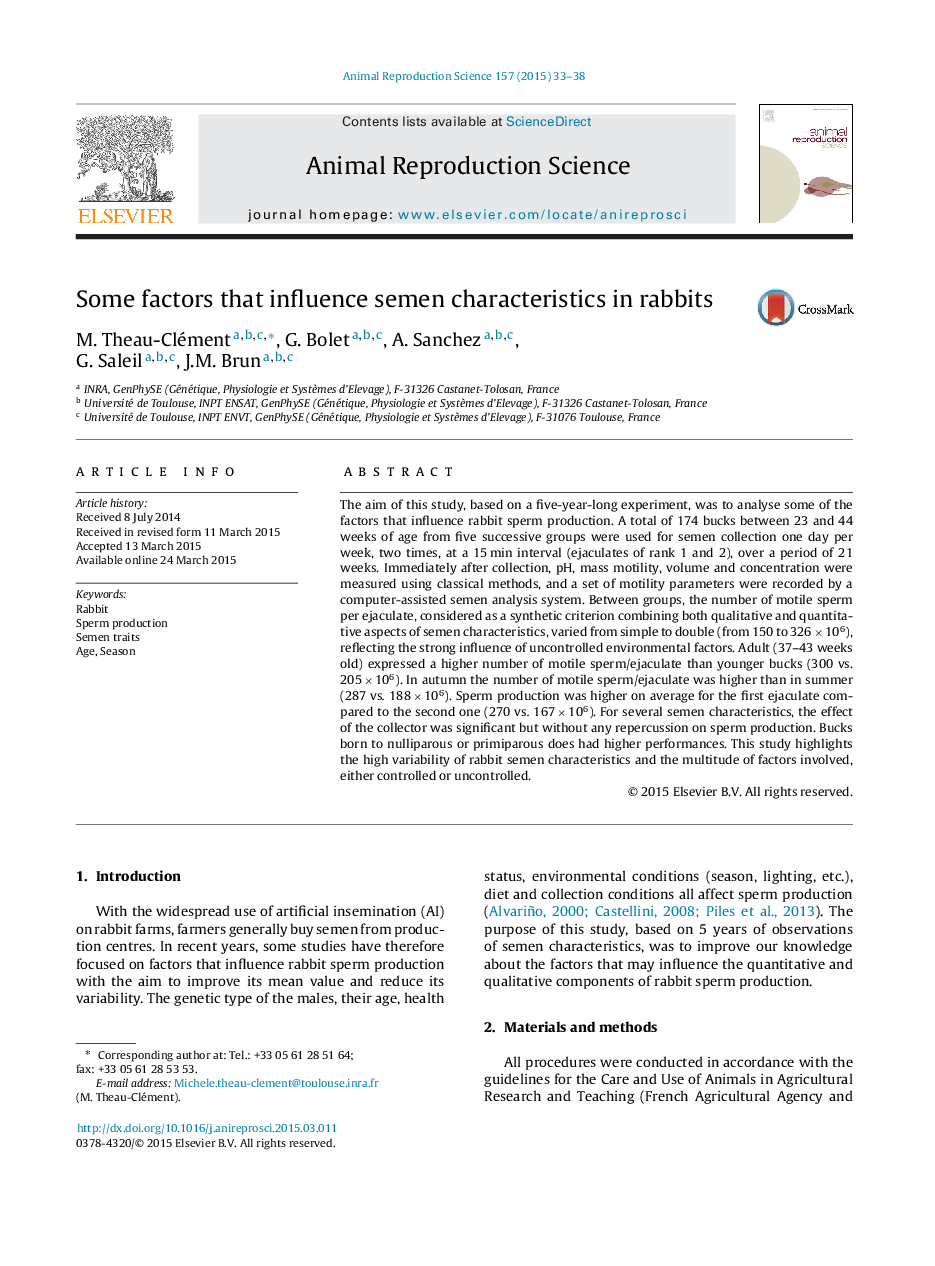| Article ID | Journal | Published Year | Pages | File Type |
|---|---|---|---|---|
| 2072773 | Animal Reproduction Science | 2015 | 6 Pages |
•Factors influencing rabbit semen production were studied on the INRA1001 strain.•Effects of age and season were differentiated: sperm production was higher in adults and in autumn.•Sperm production was higher for the first ejaculate compared to the second one.•The collector influenced several semen characteristics.•Offspring of nulliparous and primiparous does expressed some better qualitative semen characteristics.
The aim of this study, based on a five-year-long experiment, was to analyse some of the factors that influence rabbit sperm production. A total of 174 bucks between 23 and 44 weeks of age from five successive groups were used for semen collection one day per week, two times, at a 15 min interval (ejaculates of rank 1 and 2), over a period of 21 weeks. Immediately after collection, pH, mass motility, volume and concentration were measured using classical methods, and a set of motility parameters were recorded by a computer-assisted semen analysis system. Between groups, the number of motile sperm per ejaculate, considered as a synthetic criterion combining both qualitative and quantitative aspects of semen characteristics, varied from simple to double (from 150 to 326 × 106), reflecting the strong influence of uncontrolled environmental factors. Adult (37–43 weeks old) expressed a higher number of motile sperm/ejaculate than younger bucks (300 vs. 205 × 106). In autumn the number of motile sperm/ejaculate was higher than in summer (287 vs. 188 × 106). Sperm production was higher on average for the first ejaculate compared to the second one (270 vs. 167 × 106). For several semen characteristics, the effect of the collector was significant but without any repercussion on sperm production. Bucks born to nulliparous or primiparous does had higher performances. This study highlights the high variability of rabbit semen characteristics and the multitude of factors involved, either controlled or uncontrolled.
